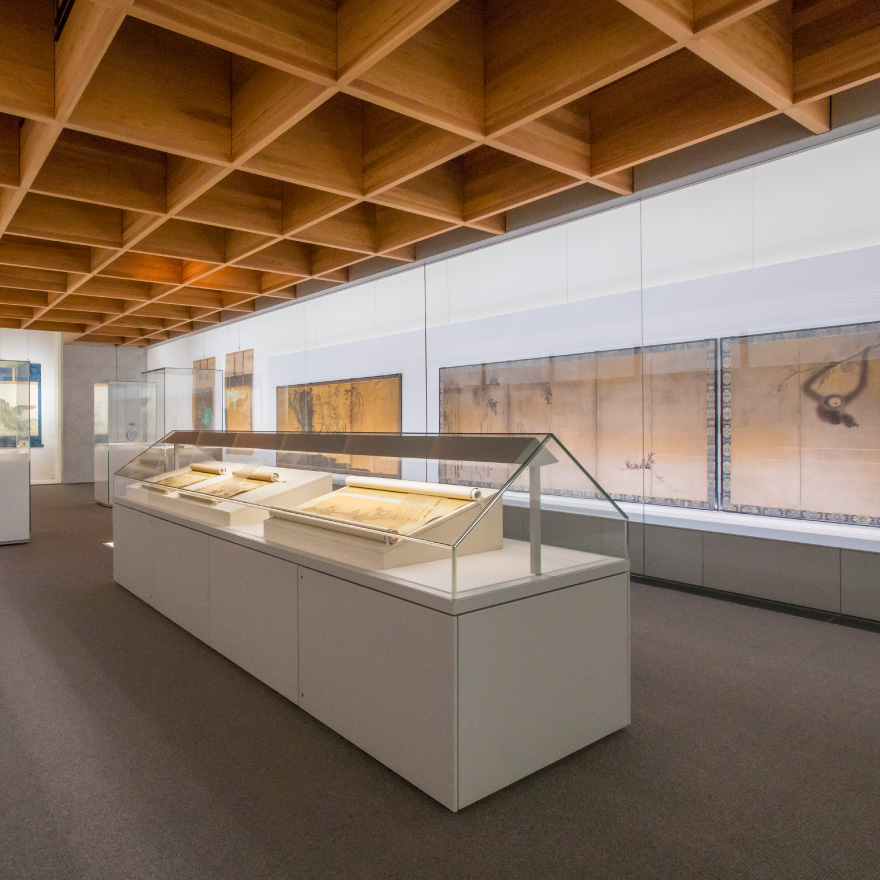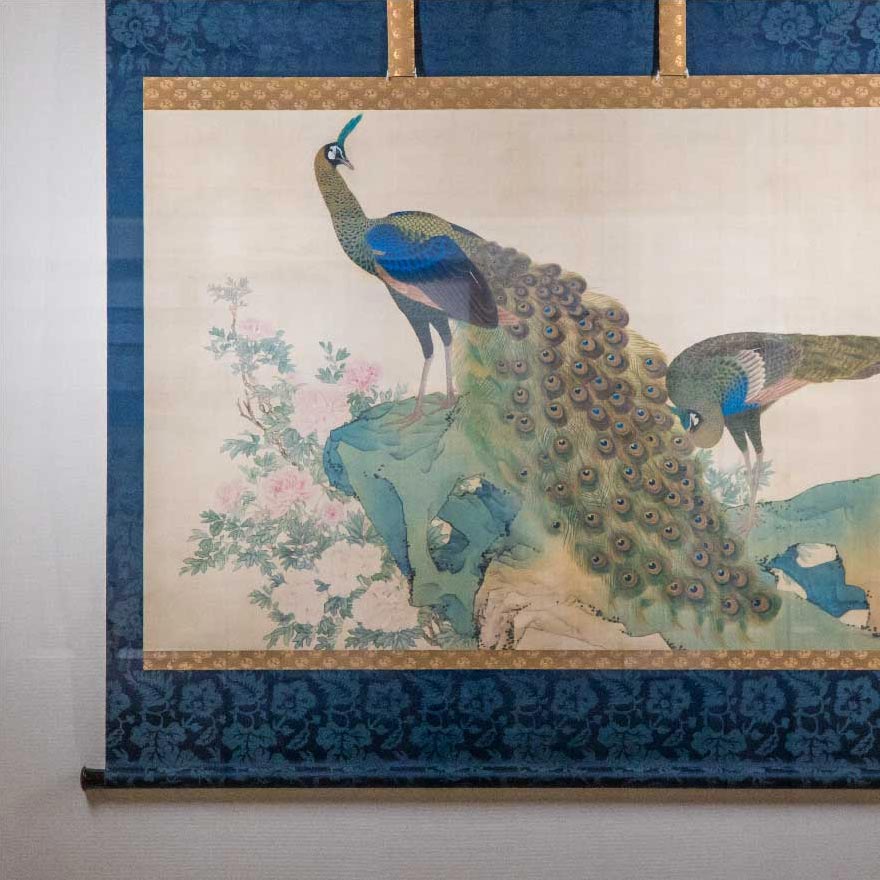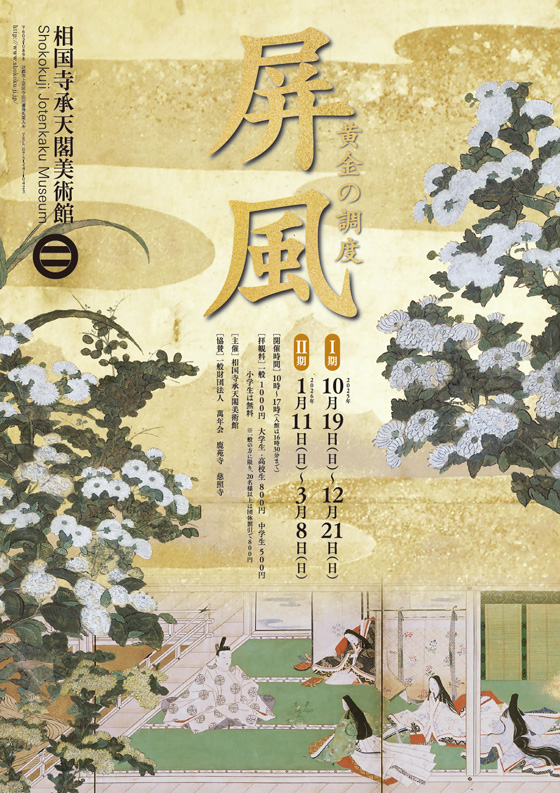
Jotenkaku Museum
Sunday, October 19, 2025 - Sunday, December 21, 2025
Closed: Monday, December 22, 2025 - Saturday, January 10, 2026
Among the furnishings of Japanese homes, folding screens have long been used to divide rooms. The folds of these screens, often joined together in groups of two or six, create a three-dimensional effect that engages our visual sense. The subjects, vividly rendered against gold backgrounds, are particularly striking. The subjects depicted are diverse, ranging from Chinese historical fables to Japanese customs and the flora and fauna of the four seasons. This exhibition will showcase folding screens from the museum's collection, including ink paintings and gorgeous gold-backed screens, centered around the group of folding screens that once graced Shokoku-ji Temple.
Sunday, January 11, 2026 - Sunday, March 8, 2026
ー Housing many outstanding cultural assets by Ito Jakuchu, Maruyama Okyo, Hasegawa Tohaku, among others
Shokoku-ji (official name: Mannenzan Shokoku Jotenzenji) is the head temple of the Shokoku-ji school of the Rinzai sect. It was founded in the third year of the Meitoku era (1392) by Muso Soseki and built by Ashikaga Yoshimitsu, the third shogun of the Muromachi bakufu. Ranked second in the Kyoto Gozan (the five great Zen temples of Kyoto), Shokoku-ji nurtured many artist-monks who went on to establish the foundations of Japanese ink painting such as Josetsu, Shubun, and Sesshu, as well as leading Zen priests of Gozan literature such as Zekkai Chushin and Osen Keisan. The temple continues to occupy a central place in Kyoto both geographically and culturally. With a history of more than 600 years, many cultural assets have been handed down from the past, especially calligraphy, paintings, and tea ceremony utensils from the medieval and early modern periods.

5 National Treasures, 145 Important Cultural Properties
The museum was founded in April of Showa 59 (1984) as part of the activities in commemoration of the 600th anniversary of the founding of Shokoku-ji, with the aim of the preservation, display, restoration, research, and dissemination of Zen culture, having been entrusted with artworks from the major temples of Shokoku-ji, Rokuon-ji (Kinkaku), and Jisho-ji (Ginkaku), as well as other minor temples. At present, we house many outstanding cultural assets including 5 National Treasures and 145 Important Cultural Properties and organize a variety of exhibitions.
On display in the first exhibition hall is a reconstruction of “Sekka-tei” from the Rokuon-ji temple grounds, which is said to have been built by Kanamori Sowa, while the second exhibition hall features part of the Important Cultural Property “Rokuon-ji Ojoin Shohekiga,” an ink-painting masterpiece from the brush of Ito Jakuchu, a legendary figure in the world of modern Kyoto painting. We look forward to your visit to the museum where you can enjoy viewing these works up close in a quiet space within the grounds of an ancient temple.

Imadegawa-dori, Karasuma Higashi-iru Kamigyo-ku, Kyoto 602-0898 Japan
Contact
075-241-0423 (Japanese only)
By train
Subway Karasuma Line:Get off at Imadegawa Station.
By bus
From Kinkaku-ji
City Bus:Get on at Kinkakuji-michi Stop.Get off at Doshisha-mae Stop.
No.59There is no private parking lot in the prefecture of Shokoku-ji.
If you park in the parishioners and adherents’ parking lot on the compound, please follow the instructions of the security guard.
Please refrain from parking for long periods of time or for purposes other than visiting Shokoku-ji Temple and Jotenkaku Museum.
We recommend using public parking lot or using public transportation.
Admission fees may vary depending on the exhibitions being held.
